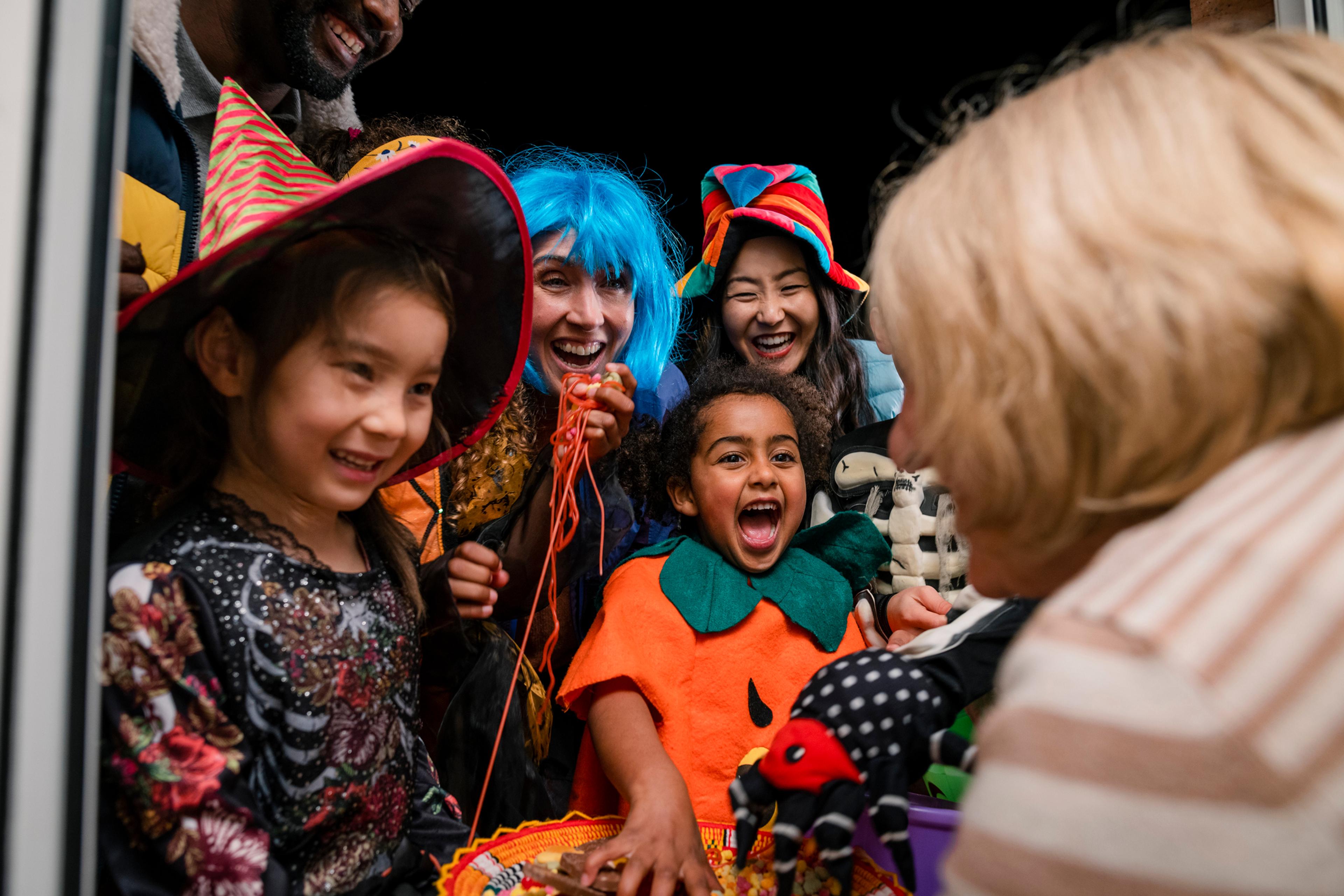4 Tips to Handle Halloween Candy in a Healthy Way

Dr. Kristi Thomas
| 4 min read

The average kid is likely going to consume between 3,500 and 7,000 calories from candy on Halloween. This is the equivalent of up to three cups of sugar.
Sugar is particularly bad for oral health because it feeds the bacteria that live in the mouth. Over time and without a daily routine of brushing, flossing and seeing a dentist, these bacteria can lead to irreversible damage to the teeth and gums as an infection begins. In the early stages, it will likely be unnoticed but if left untreated, this can result in pain from cavities and gum disease. Gum disease, or periodontal disease, has been linked to an increased risk of chronic systemic diseases including diabetes, heart disease, pregnancy complications, Alzheimer's disease and some cancers.
Candy poses a particular concern for oral health not only because of its high sugar content. Many candies are chewy and sticky, which make them difficult for the average child to fully brush off from all the deep grooves in teeth – also increasing the risk for cavities. Dental cavities are the most chronic disease in children. The good part is they are preventable!
Here are four tips to help children navigate the fun of trick-or-treating while staying healthy:
1. Eat a balanced meal before trick-or-treating starts.
- Take a moment before the excitement of trick-or-treating begins to sit down for a balanced meal. Candy is high in sugar but low in nutrients and fiber – which means a person would need to consume more of it to feel full. The high sugar content in candy can lead to spikes in blood sugar, which are followed by a crash of energy. Aim for foods high in protein and healthy, whole grains, healthy fats and fiber-dense foods like fruit and vegetables to help everyone sustain their energy during the event so children can get to every house on the block and aren’t approaching the event with a mindset of hunger and scarcity. Experts advise children ages three to 17 years old should consume a daily diet with no more than 10% added sugars.
2. Let kids eat a normal amount of candy.
- Unless a child has dietary restrictions, allow them to indulge in treats during the event. Halloween is one day out of the year, and part of celebrating the holiday is eating candy. Parents and guardians can set limits on the number of treats enjoyed on Halloween night. Give children control over their choices: let them pick which candy treats they’d like to eat. However, when the treats are done for the night, store them outside of the bedroom. This reduces the temptation to go back for more.
3. Talk about candy in a healthy way.
- Labeling candy and treats as “bad” foods and restricting access to them can contribute to an unhealthy relationship between children and sweet treats that could lead to bingeing behaviors. Additionally, comments about how candy and treats can negatively affect a person’s weight can contribute to internalized attitudes in children. Teach children and teens that candy can be enjoyed as an occasional treat, but not as an everyday food and should be part of an overall balanced meal.
4. Brush teeth afterwards.
- Be sure everyone brushes their teeth and flosses after Halloween night. While good dental hygiene is important every day, it’s especially important after eating candy, as many treats passed out during Halloween can be especially sticky and cling to teeth and gums. Especially for younger children, consider helping them brush and floss to get into the hard-to-reach places in the mouth to ensure all the candy is removed. Consider this: make a special trip to the store to buy new toothbrushes that are orange, green, purple or Halloween-inspired to use before bed. Kids and adults love new toothbrushes!
Brushing tips for children
- Brush teeth twice a day for at least two minutes each time, with a soft toothbrush and fluoride toothpaste. Use gentle pressure in a circular motion, as excessive pressure can hurt the gums and surface of the teeth.
- Younger children ages 2 and up should brush with a pea-sized amount of fluoride toothpaste and be assisted by an adult to brush effectively up until the age they can tie their own shoelaces, which is about age 7 or 8.
- Parents can assist children by flossing their teeth once a day.
- Babies need to brush their teeth too: begin brushing teeth with a soft toothbrush and smear of toothpaste when teeth begin to appear.
- Make sure everyone understands the brushing and flossing assignment. We want to remove all the sugar and plaque bacteria from our mouths.
A person’s oral health is directly connected to their overall health and wellbeing. Establishing good dental habits and healthy approaches to food at an early age with children and young people is important to building a long, healthy life.
Kristi Thomas, D.D.S. M.P.H., is an associate dental consultant at Blue Cross Blue Shield of Michigan.





